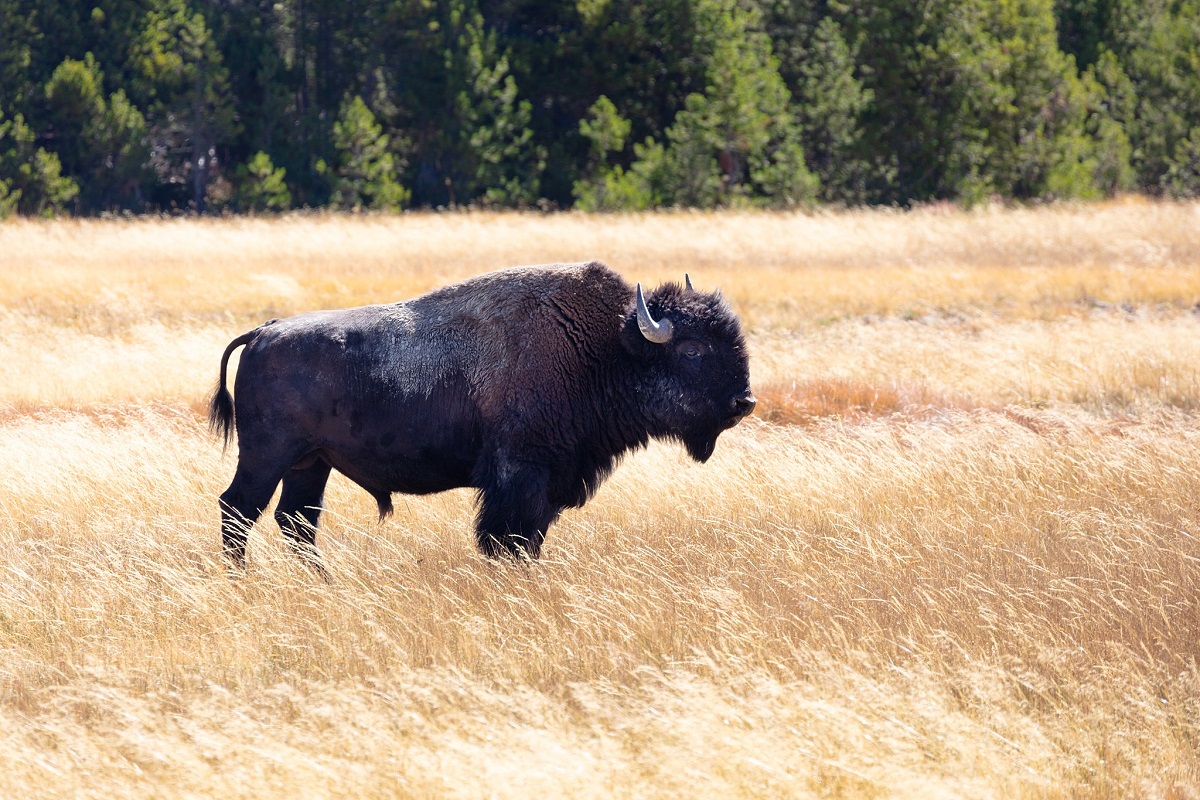By: Randy Tucker
We were standing on a hillside, watching a grizzly bear about a half-mile away on another slope ripping apart an old log and eating the grubs he found underneath. Earlier that day we’d watched a herd of bison grazing in an open meadow. We were in Yellowstone National Park, taking a Large Mammals of Yellowstone class taught by Dr. Ernie Ables. The good doctor was a professor from Idaho, and his class was a highlight of the summer.
As we watched the grizzly bear, I made a quiet remark to my friend Jim Yager, “Do you think we should tell them?” I said.
Jim knew my twisted humor and played the straight guy perfectly. “They don’t need to know, the rangers said to keep it to ourselves.”
That piqued the interest of the dozen or so students taking the class.
“What aren’t we supposed to know?” a pair of “save the animal” type gals from New Jersey said in unison.
I paused, then said, “The bears are in danger and not from man.”
Dr. Ables briefly put down his binoculars, looked my way while raising an eyebrow, and gave me a grin.
“What could harm a grizzly?” they asked.
I had them hooked, and my tale began.
We’d passed a sign earlier at a ranger station that said, “Moose 7, poodles 0,” in reference to the surprising number of small dogs that challenge cow moose and lose epically. That was my lead.
“Well, about 15 years ago a pair of dachshunds escaped from a Winnebago from Texas,” I said. “They multiplied rapidly and found other dachshunds at campsites that escaped and joined them. Dachshunds? You might wonder. (never mind, they were hooked)
“Yes, Weiner dogs, dozens of them running wild in feral packs,” I said. “They track grizzlies and take their kills from them.”
Dr. Ables smiled; he was enjoying this story.
“Once in a while the grizzlies will charge the pack, and it’s not pretty. The entire pack, 30 or 40 dachshunds will attack all at once, swarming the bear and taking it down. The grizzly is defenseless, and the Weiner dogs rip it apart.”
Stunned, the gals from Jersey and the other students in the group asked in near unison, “Why haven’t we heard about that? Why do they allow it to happen?”
Dr. Ables ended the charade, “Because it didn’t happen. Good story though.”
He then proceeded to say that the big boar grizzlies have an enemy other than man.
Jim and I were riveted.
“What do you mean?” I asked.
“Since around 1925, the rangers have kept track of battles between bull bison and boar grizzlies,” Dr. Ables said.
The other students didn’t say anything, but I did, “What’s the score?” I said.
The gals were obviously disgusted by the “toxic male” question, but I wanted to know.
“The score is grizzlies three, bison two,” Dr. Ables said. “And rangers had to destroy all five winners since they were so badly injured.”
Imagine the fury of a battle between a 2,000-pound bull bison and an 800-pound boar grizzly. The sheer power is incredible.
I have a friend who is a renowned local veterinarian, Dr. Glen Gamble. He was called out to investigate a dead Angus bull above Lander, Wyoming.
Glen set out on horseback, and the rancher led him to the half-eaten carcass. The head was missing. They found it a few dozen yards away, gnawed on heavily. The carcass had the telltale signs of a big bear with the guts ripped open and eaten away. They surmised from the tracks and the eating pattern that a grizzly had jumped the bull, tearing its head off and then consuming the remains.
The signs were fresh, and when the horses started to fidget, they quickly left the area.
To compare how powerful a grizzly must be to take a huge bull, I had a bull of similar size I had to treat for pinkeye.
The process is to catch cattle in a squeeze shoot with a head catch and apply ointment and powder to the eye. It worked easily with a few cows; I caught and held their heads while my wife applied the medicine.
The bull wasn’t having any of this. I caught him easily enough, but I wasn’t strong enough to run and hold his head. I made a rope halter and tied him to the chute, then tightened it when he turned his head up. He didn’t like that either.
I lifted his eyelid so we could apply the ointment and that was too much. He stood up, and the two railroad ties, which were chained to the chute and set three feet deep, started to lift out of the ground. My wife quickly puffed the powder on his eyes. I untied the rope, got her out of the pen, and let him go. Imagine something that strong killed by a single swipe of a grizzly bear paw.
Grizzlies are now common throughout the Wind River Range, and we’ve stopped fishing in many areas we used to enjoy because of the heavy concentration. They’re taking back the mountains.
Randy Tucker is a retired history teacher and freelance writer from western Wyoming. He has a lifetime of experience in farming, ranching, hunting, and fishing in the shadow of the Wind River Mountains. Contact him at [email protected].

